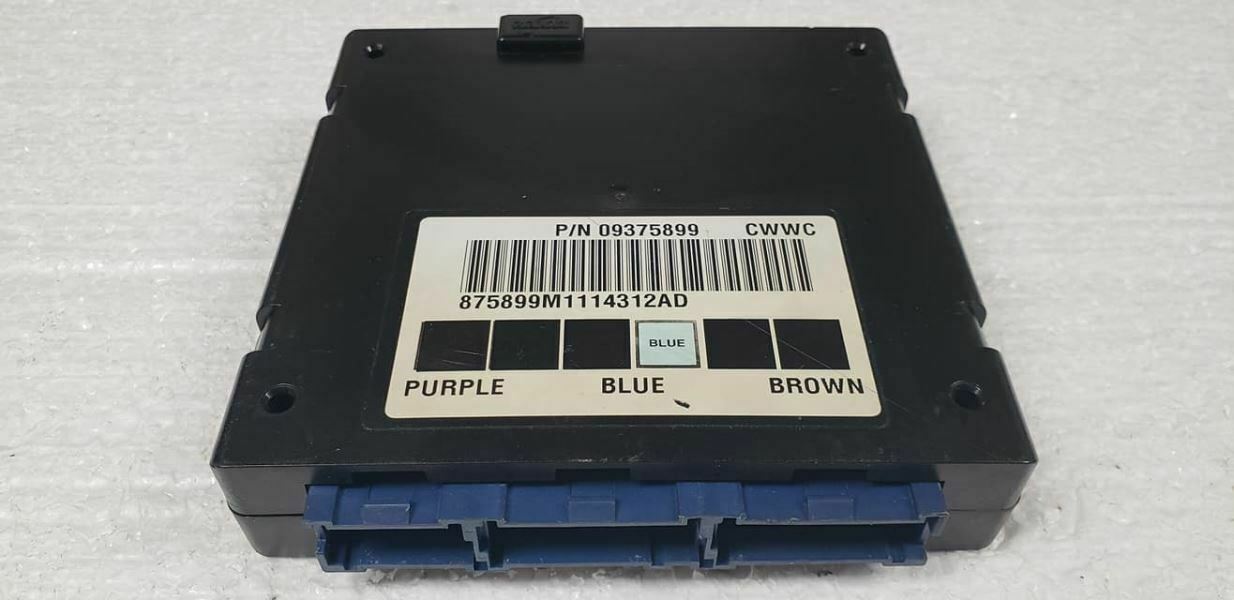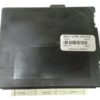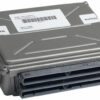Restore Control and Reliability to Your GM Truck
If you’re dealing with bizarre electrical gremlins in your 2001 GM truck, you’re not alone. As a technician with over two decades of experience, I’ve seen firsthand how a failing Body Control Module (BCM) can turn a dependable truck into a source of constant frustration. The BCM is the central command center for your vehicle’s body electronics, and when it starts to go, it can cause a cascade of confusing issues. This isn’t just a part; it’s the solution to getting your truck’s personality back.
We take the biggest headache out of the repair process. Instead of towing your truck to a dealership and paying hefty programming fees, we send you a BCM that is pre-programmed to your truck’s specific Vehicle Identification Number (VIN). We load it with the latest GM software updates, ensuring optimal performance and compatibility right out of the box. This is the most efficient way to tackle the job, whether you’re a seasoned mechanic or a determined DIYer.
Is Your Truck Showing These Symptoms?
A faulty BCM can manifest in many ways. Over the years, I’ve diagnosed hundreds of these modules, and the complaints are often similar. Check if any of these sound familiar:
- ✔ Power windows, door locks, or mirrors operating intermittently or not at all.
- ✔ Interior dome lights staying on or not turning on when a door is opened.
- ✔ The security system light flashing, preventing the truck from starting (PassLock issues).
- ✔ Erratic gauge behavior or warning lights (like the airbag light) illuminating for no reason.
- ✔ Horn honking unexpectedly or not working when pressed.
- ✔ Radio or climate control systems acting up.
A Technician’s Notebook: The Case of the Haunted Silverado
A customer brought in his 2001 Silverado 1500, convinced it was possessed. The horn would blare at random intervals, the dome light wouldn’t shut off, and the driver’s window was stuck down. He’d already replaced the window motor and the horn relay with no luck. After connecting my scan tool, I saw multiple communication loss codes with various modules. This pointed directly to the central hub: the BCM. The internal circuit board had developed micro-fractures in the solder joints from years of heat cycles and vibration—a classic failure on these GMT800 platforms. Installing a VIN-programmed 2001 Silverado BCM and performing the necessary key relearn procedure had all systems operating perfectly in under an hour. The customer was thrilled to have his reliable truck back, free of ghosts.
A Straightforward Guide to Installation
Replacing the BCM is a manageable job for someone with basic tools and patience. It’s typically located under the driver’s side of the dashboard. Here’s a general guide to get you started:
- Safety First: Always disconnect the negative terminal from your truck’s battery to prevent any electrical shorts.
- Access the Module: Remove the lower dash panel (knee bolster) below the steering column to expose the BCM. It’s a black box with several large electrical connectors.
- Disconnect and Remove: Carefully unplug all wiring harnesses from the old BCM. They have locking tabs that need to be depressed. Once disconnected, unbolt the module from its mounting bracket.
- Install the New BCM: Mount your new, pre-programmed BCM in the same location and securely reconnect all the wiring harnesses. You should hear a ‘click’ as they lock into place.
- Perform Final Procedures: Reconnect the battery. The truck may not start immediately due to the security system. You will need to perform the required post-installation steps outlined below.
Critical Post-Installation Steps for Full Functionality
Simply swapping the part isn’t the final step. To ensure safety and proper operation, these procedures are essential after installing your new 2001 Silverado BCM:
- Airbag System Reset: An active airbag warning light is common after a BCM replacement. You must use a compatible diagnostic scan tool to perform the ‘Setup SDM Primary Key in BCM’ procedure. This re-establishes communication between the airbag system (SDM) and the new BCM, clearing the light and ensuring the system is armed.
- Brake Pedal Position Sensor (BPPS) Recalibration: Some vehicles require the brake pedal position to be recalibrated. This ensures the BCM accurately reads brake pedal input, which is critical for anti-lock brakes and stability control functions.
- Security Relearn Procedure: Your vehicle’s PassLock anti-theft system will need to relearn the new BCM. This procedure typically involves turning the key to the ‘ON’ position for 10-15 minutes, then ‘OFF’, and repeating two more times. Consult your owner’s manual for the exact sequence for your truck.
Note: While many DIYers can perform the security relearn, the airbag and brake procedures often require a professional-grade scan tool. If you are unsure, we recommend seeking assistance from a qualified local mechanic.
Verified Vehicle Compatibility
This module is a direct-fit replacement for several GM trucks and SUVs. Please verify your part number or match your vehicle from the list below. This part is interchangeable with part numbers 09375899, 9392990, 09370249, and 19180223.
- ✔ 2001 Chevrolet Silverado 1500, 2500, 3500
- ✔ 2001 GMC Sierra 1500, 2500, 3500
- ✔ 2001 Chevrolet Tahoe (4×2, ID 9392990)
- ✔ 2001 Chevrolet Suburban 1500 & 2500 (ID 9392990)
- ✔ 2001 GMC Yukon (4×2, ID 9392990)
- ✔ 2001 GMC Yukon XL 1500 & 2500 (ID 9392990)
Frequently Asked Questions
Do I need to send my old BCM back (core charge)?
No, there is no core charge or need to return your old module. This is a direct purchase.
How do I provide my VIN for programming?
After you complete your purchase, simply send us a message with your 17-digit VIN. We cannot ship the module until we receive this information, as the programming is essential for it to work in your truck.
Will this fix my truck’s no-start problem?
If your no-start issue is caused by the PassLock security system being triggered by a faulty BCM (often indicated by a flashing security light), then yes, this part will resolve the problem once the security relearn procedure is completed.
Is this a simple plug-and-play part?
It is plug-in, but not entirely plug-and-play. Because it is pre-programmed, you avoid a trip to the dealer. However, you must perform the post-installation procedures like the security relearn and potentially the airbag/brake resets to restore full functionality.
What tools do I need for the post-installation procedures?
The security relearn procedure requires only your vehicle’s key and some time. However, resetting the airbag light and recalibrating the brake pedal sensor require a bi-directional professional scan tool, like a Snap-on, Autel, or a GM Tech 2.



